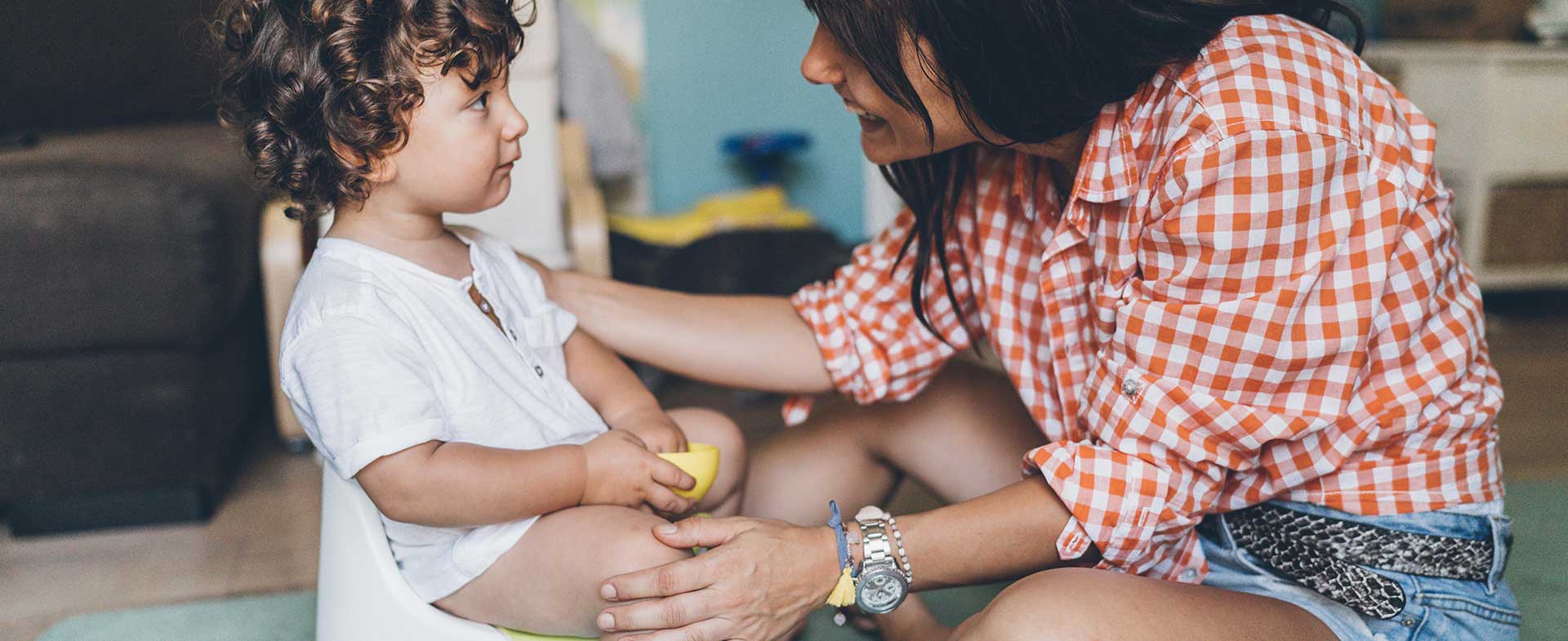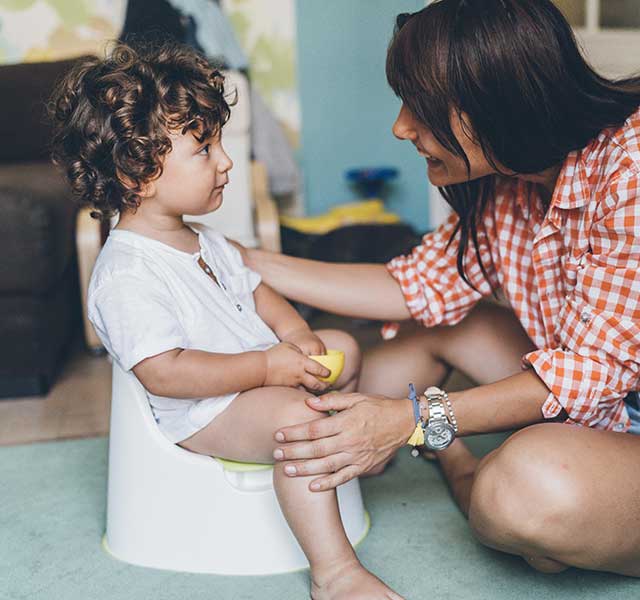When it comes to potty training, toddlers and parents have to navigate new, often tricky terrain. Whether you’re the one sitting in the mess — or the one cleaning it up — emotions often run hot as patience wears thin.
“Parents have a set time in their minds about when children should be potty trained, yet they can’t make their child go potty,” says Michelle Faber, M.D., a pediatrician at Henry Ford Health. That’s where the battle of the wills begins.
Potty Training Tips
Toddlers can control two things: what goes into their bodies and what comes out. While it’s reasonable for parents to think they can coach their kids to pee and poop on command, the reality is, potty training only works when kids are in the driver’s seat.
Before you even think about toilet training, your child should reach a few basic milestones:
- They can walk to the bathroom.
- They can sit on a child-sized potty and get back up.
- They can tell you when they need to go (even if they can only say “pee”).
Once a child has mastered those three things, there are a number of things you can do to set the stage for success. Here are a few of Dr. Faber’s favorite toilet training tricks:
- Watch for readiness: If you notice your child retreating from play to have a bowel movement, chances are she knows what’s going on. Some kids even head to the bedroom to poop and then come back out when they’re done. Take note of their patterns: Does he have a bowel movement every morning? Or does she go right before bed? Once you know your kid’s habits, you can begin to coax him to sit on the potty around those times.
- Follow the child’s lead: Most kids are ready between the ages of 2 and 3, but some are raring to go even before their second birthdays. Others need a little more time. It’s really important to follow a child’s lead. If you make it a fight, the child is going to win.
- Go all in: Once you recognize signs of readiness, choose a weekend to stay at home and go for it! Make a big show of trading in the child’s diapers for big kid underwear. Then, set up a reward system. Get a bunch of toys from the dollar store or tape up a sticker chart. At first, your child will probably have a bunch of accidents. But, over time, they’ll learn to recognize the sensation that they have to go — and they’ll start to feel uncomfortable sitting in soiled diapers.
- Consider a potty chair: Sitting on a kid-sized chair puts the child in a physiological position that encourages success with bowel movements. It also ensures the child won’t fall into the toilet. Still want to stick with the regular toilet? Use a child seat top and offer your child a step stool to promote successful bowel movements.
- Don’t rely on pull-ups: Pull-ups are pull-on diapers. They’re not underwear. A child won’t feel much different wearing them, so they’re more likely to soil them. More concerning, pull-ups are not designed to wick away moisture, so sitting in a soiled pull-up could cause a rash, urinary tract infection or other ailments. But these fancy diapers do have a purpose: They’re great for overnight use, especially for children who are sound sleepers.
- Be consistent: Once you decide to potty train, consistency is critical. Every parent, caregiver and babysitter should know the drill. Maybe you hold a family meeting. Or maybe you write an instruction sheet. Whatever you do, just make sure everyone knows how to handle the potty situation with your child. So if Mommy gives Johnny a sticker when he pees on the potty and a dollar store prize when he poops, he should get the same rewards with every other caregiver.
- Keep it positive: Children are wired to seek parental approval. So, with toilet training, focus on praising your child for every success, no matter how small. When they slip up, resolve the problem (with a change of underwear) and move on. Most important, never let a child sit in dirty diapers as a “natural consequence.” Learning a new skill requires patience and understanding. You can even expect kids to regress and have accidents after they’re fully potty trained. If that happens, you may need to break out the sticker charts again.
Potty Training Success
When it comes to potty training, accidents are a given. The key is responding to these setbacks calmly and with kindness. If you try to potty train and get some resistance from your child, back off. Take a break and try again in a few weeks.
If you’re the one getting frustrated, that’s also a sign that you need a break. Make sure you’re getting sufficient sleep, that you have the help you need and that you’re emotionally prepared to take on the challenge. Then, try again.
To find a pediatrician at Henry Ford, visit henryford.com or call 1-800-HENRYFORD (436-7936).
Dr. Michelle Faber is a board-certified pediatrician seeing patients at Henry Ford Medical Center - Ford Road in Dearborn.



